100% CERTIFIED SPOILER FREE!
I was there at the dawn of the third age of TV science fiction…
I was actually there at the dawn of the second age, too, but I was still in diapers. The first age was completely before my time, and the fourth age…well, the fourth age is happening right now! And what the flying flark am I talking about????
I find it interesting to read the comments of the folks who don’t like STAR TREK: PICARD. A few anti-CBS fans out there, I believe, had convinced themselves to hate the show before the series ever started. Others, I suspect, saw how slowly the first few episodes were going and decided right then the show was “garbage.” Still others can’t forgive Picard for not being the second coming of The Next Generation the way The Orville has been. Some don’t like the “dystopian future” or the damaged characters or the swearing (I raise my hand for that one) or the mustache-twirling, sunglasses-wearing, way-too-over-sexual villains.
And as Roseanne Rosannadanna used to say on Saturday Night Live, “It’s always sumthin’. If it’s not one thing, it’s another.” And I think that’s true of much of recent sci-fi—and especially Star Trek…and especially lately. But as we crossed the midpoint of the 10-episode run of the first season of Picard, I wondered something…
Are the fans who DON’T like the show—for whatever reason—are they just not watching Picard the “right” way? And for that matter, is there, in fact, a “right” way to watch Picard? I actually think there is!
But to truly appreciate what I’m going to tell you in this blog, we need to take a slight detour through the 70-plus year history of science fiction on television…
I could easily write a graduate-level dissertation on the following subject (as could many of you, I’m sure!), so please forgive me for oversimplifying the past seven decades of TV sci-fi and for leaving out about 95% of the shows I’m sure you all love. That said…
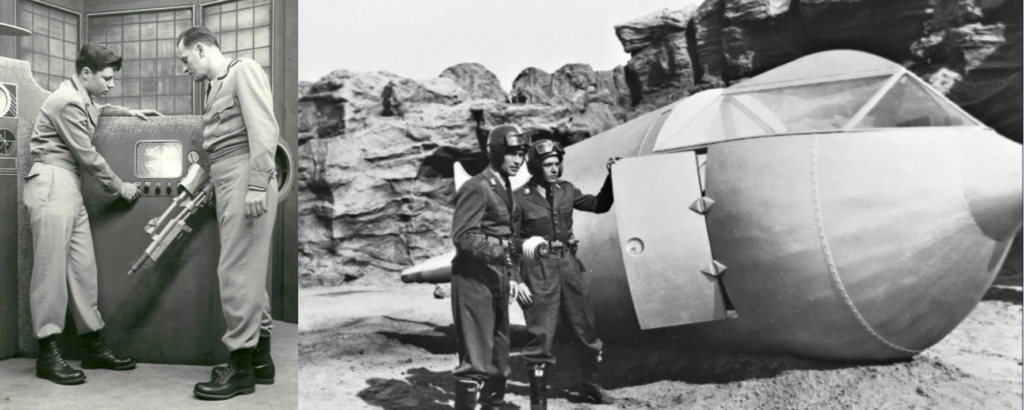
What I would call the first age (or the golden age) of television sci-fi are all those classic old black-and-white shows like Captain Video and Tom Corbett: Space Cadet. These shows were cheesy, somewhat juvenile, and usually involved a villain or monster of the week who would ultimately get zapped with a ray gun. Later on, The Outer Limits and The Twilight Zone would elevate the genre significantly, but spaceships were still always shaped like either a rocket or a flying saucer, and any social commentary in the stories was pretty direct (even if viewed through a doorway into another dimension not only of sight and sound but of mind).
Like almost all syndicated television of the time, these series were episodic, always telling a complete story in the half hour or hour allotted. Some were anthologies where every episode had different characters and settings, but even those with recurring characters seldom if ever featured serialized storytelling. (And please, you there in the back, stop yelling “Dark Shadows.” It was a soap opera, not pure sci-fi.)
Okay, moving onto the second age…and you already know what I’m going to say. Yep, Star Trek threw out the playbook and rewrote all the rules. Sure, some episodes had villains and ray guns (phasers), but others didn’t. Sometimes the answer was simply love, or Kirk talking a computer into self-destructing, or beaming the problem into the Klingon engine room, or diplomacy, or science, or deciding not to kill. And the villains themselves often saw themselves as being in the right and our heroes as misguided. The space ships seldom looked like rockets and flying saucers (unless you glued a flying saucer onto three cylindrical rockets). And of course, the social commentary became much more subtle, as “alien” cultures on other planets let viewers take a look at our own society and its challenges through the “safe” lens of sci-fi.
Like the first age, the second age of TV science fiction was episodic. Maybe you’d get the occasional two-parter, but these shows were still always intended to be sold into syndication and watched potentially out of order. And so Star Trek led to Space: 1999, Battlestar Galactica, Buck Rogers, and eventually to Star Trek: The Next Generation. And even spin-off Trek series after TNG, like DS9, Voyager, and Enterprise were still, at heart, products of the episodic second age (although not as much as TNG, but we’ll get to that next).
It was Babylon 5 in 1992 that brought with it the dawn of the third age of science fiction on TV. Fans had never seen anything like it before (and I don’t just mean the VFX generated entirely from CGI animations). Creator J. MICHAEL STRACZYNSKI had plotted out the entire series—all five years—before the first episode had even been filmed! He knew what was coming, who would live, who would die, which characters would evolve and in which directions, what mysteries would unlock which secrets and when. All we viewers needed to do was be patient, sit back, enjoy the ride, and all would be revealed to us. Babylon 5, JMS told us, was like reading an epic saga divided into five novels. Each novel was a season, and each episode a chapter.
Granted, not every episode was a “storyline” episode. Some were just filler. During season one, only about a quarter of the episodes tied directly into the larger 5-year saga…and some of those only with a single scene or two. In season two, it was about half the episodes. Then by season three and beyond, pretty much every episode continued the ongoing storyline from the previous one. JMS may as well have ended each episode with a “To be continued…” It was space opera, it was brilliant, and it changed sci-fi forever. But it was also a VERY difficult act to follow!
Indeed, other series—including Star Trek‘s spinoffs—tried to mimic at least a little of what Babylon 5 had done storywise. DS9‘s final four seasons ushered in the evolving and continuing Dominion War plot line. In fact, the final ten episodes of the series were essentially a 10-parter. And after missteps with Voyager’s “mixed Starfleet/Maquis crew” concept going nowhere and Enterprise‘s “temporal cold war” being about as compelling as iceberg lettuce, Enterprise‘s third season tried (and mostly failed) to have a season-long Xindi arc. Meanwhile, other series like The X-Files and the rebooted Battlestar Galactica were arguably doing a better job of keeping fans engaged with overarching story arcs…although few did it as well as B5.
From the 1990s onward, television had evolved enough that the third age pretty much replaced the second. Nearly all sci-fi became serialized at least in some way, with storylines developing over a season and throughout a series. Gone were the days when you could view episodes in any order and not be confused. And it wasn’t just sci-fi! Watch Friends and try to figure out if Ross is pining for Rachel, if they’re together, if they’re on a “break,” if Rachel is pining for Ross, if they’re married again, divorced, if she’s pregnant, or if she’s having a mercifully-short fling with Joey (yuck!). But across sci-fi in general—from Farscape and Firefly to Fringe to the various Stargates—serialized sci-fi story elements were now the norm.
However, precious few shows were actually plotting out entire seasons from beginning to end just yet, although some were beginning to—like Game of Thrones and The Walking Dead. In fact, Star Trek: Discovery tried to give it a shot, as well, although the pacing of that series often became too manic to really feel coherently plotted. So up until now, the challenges of tightly plotting out an entire season from the first episode to the last has eluded Star Trek and, to be fair, most other mainstream TV sci-fi.
Until now, that is.
Ladies and gentlemen, welcome to the fourth age of science fiction television! With the help of Netflix (but also Prime, Hulu, HBO, Disney+, Showtime, and others), that elusive “holy grail” of plotting and producing an entire tightly-scripted season or series of episodes telling one complete story from beginning to end has quickly become the new normal.
It’s something that Joe Straczynski could only have dreamed of thirty years(!!!) ago when producing Babylon 5. Almost every new sci-fi series we see on the streaming subscription services is essentially an 8-hour or 10-hour long TV movie divided up into 8 or 10 or 13 parts. The Expanse, Stranger Things, Lost in Space, The Mandalorian, Westworld, The Boys, Watchmen…the list goes on and on.
And what has made this possible is simple math. The new streaming services make their money from subscriptions and not from advertising. and the more content they provide, the more subscriptions they get. So unlike the traditional television networks which produced around 20 to 30 shows with full 20-26 episode seasons, HBO or Netflix or Prime can release seasons with only 8 or 10 episodes…cutting the production costs in half. And then that extra money can either be saved or else get put into increasing the production value with more locations, better sets, costumes, make-up, and of course, visual effects.
But also, if you’re writing all 8 or 10 of your episodes BEFORE any director ever yells “Action!” then you save additional money on logistics. For example, let’s say you’re producing Stranger Things and overt the course of the entire season, you need to film 25 scenes at the Starcourt Mall (really the Gwinnett Place Mall near Lawrenceville, GA). So you would just lease out the portion of the mall that you need for a single week of filming, move your equipment and team members there, and shoot all your scenes for the season in one fell swoop rather than going back and forth to the same location…saving your production money by doing it all at once. This is actually what Star Trek: Picard did by filming all of the scenes at “Château Picard” over a single 9-day period last April.
And speaking of Picard, let’s FINALLY get back to the whole reason I’m writing this blog…!
You see, Picard is the first-ever Star Trek to be created totally embracing the fourth age of sci-fi television. And I suspect that many of the fans who aren’t liking the series don’t yet realize that each episode isn’t really an episode—it’s a chapter in a novel, or maybe the better analogy is that each episode is 1/10 of an eight-hour long Star Trek episode!
I was recently watching “Yesterday’s Enterprise” with my son Jayden, and I noticed something interesting. Although it’s a fan-favorite, the episode is (surprisingly) really slow. Despite it being beautifully lit and very well acted and directed, it’s mainly just talking, talking, and more talking. Picard talks to Garrett. Guinan talks to Picard. Yar talks to Castillo. Guinan talks to Yar. Yar talks to Picard. About halfway through, there’s some brief action when the Klingons attack and Captain Garrett is killed. But the majority of the excitement occurs during the final act with the big attack while the Enterprise-D tries to hold off the Klingons long enough for the Enterprise-C to get to the temporal rift.
And as I’ve watched through Next Gen with Jayden, I’ve noticed that the vast majority of episodes are structured in a similar way. Oh, sure, some have more action and tension than others. Some have more mystery or more romance or more peril. But in general, the story structure follows the pattern of a slow beginning with maybe a brief bit of excitement finish up the teaser, a steady build-up though the first four acts with perhaps one or two suspenseful moments just before breaking into commercials, and then all of the real action happens in the final act.
In many ways, the six episodes we’ve seen so far of Picard have a similar overall structure. The first episode had some limited intense action but was otherwise mostly set-up. The next two episodes were fairly slow, introducing new characters and backstories gradually before finally getting the “crew” into space at the very end. The two episodes after that built some tension and had a bit more action. Then episode six, after a relatively slow first half-hour, finally gave us our first real life-and-death moments since episode three. I see the end of episode six as the similar to the first Klingon attack in “Yesterday’s Enterprise” when the stakes suddenly became much higher and the clock started ticking.
With four episodes left, I expect things to keep up a faster, more exciting pace in general, but likely with a bit of slowness in episodes 7 and 8 (much as things slowed down somewhat after the first Klingon attack in the “Yesterday’s Enterprise”) before finally blowing us all away with action in the final two episodes.
If watched this way—looking at Picard as a single super-long episode divided into ten segments—then I think it becomes easier to accept the little “imperfections” that you see in any one particular episode. Not every scene in “Yesterday’s Enterprise” was perfect, but taken as a whole, that episode is one of TNG‘s best and a proud part of the Star Trek legacy.
Now, if your issue is with the swearing or the few gory scenes, then you’re letting approximately 25 or 30 seconds total out of eight hours ruin something for you—or as Picard himself says, you’re “allowing the perfect to become the enemy of the good.” Sure, the swearing bothers me, but I choose to overlook and simply enjoy the rich cinematic experience that is being shared with me.
The same is true for the complaints like, “All of the women are just bashing Picard constantly” (that’s a strangely common criticism I see often on Facebook) or the villains are too one-dimensionally sinister or the characters are getting too much/not enough development or “I don’t like dystopian futures.” Like the Borg, such complaints seek “perfection” while not appreciating the individuality that makes Picard stand out as a truly unique Star Trek experience. We fans have never seen a Star Trek like this—which is, of course, the whole point of creating it.
SIR PATRICK STEWART didn’t want to do Star Trek in any way that it had been done before. So yes, Starfleet and the Federation have been damaged psychologically and have retreated from their ideals. Yes, not every character is idealized or developed equally in each episode. Yes, there is swearing and some gore. And yes, for some reason, many women on the show seem to use Picard as a punching bag. But so do men, and Romulan assassins, and probably even the dog got pissed off at Picard after the first episode and didn’t show up in the next two episodes on the vineyard out of protest!
But what we are getting is a repast of amazing scenes and solid storytelling, plotted tightly and carefully to tell a rich, full story in ten parts. We see characters who are damaged yet are also heading toward some form of redemption and healing by the end…hopefully.
And HOPE is the true heart of Star Trek. It has always been so. Hope that Kirk and Spock and/or the Enterprise-D crew will save the day. Hope that Starfleet will retake DS9 and win the Dominion War. Hope that Voyager will make it back to the Alpha Quadrant. Hope the someone other than BRANNON BRAGA will take over as show-runner on Star Trek: Enterprise before it gets cancelled. (Oops, did I say that last one out loud?) And now we hope that Picard and his crew can somehow uncover the plot that destroyed Mars and perhaps save the soul of the Federation. This show is all about hope.
Anyway, fans wanting or expecting to once again see episodic Next Gen stories—just with an older Picard—went into this new series destined for disappointment. That starship has sailed, my friends. But the voyage, the trek if you will, that we’ve embarked on instead is still very much worth traveling. You just have to give it a chance.
That’s what hope is all about.

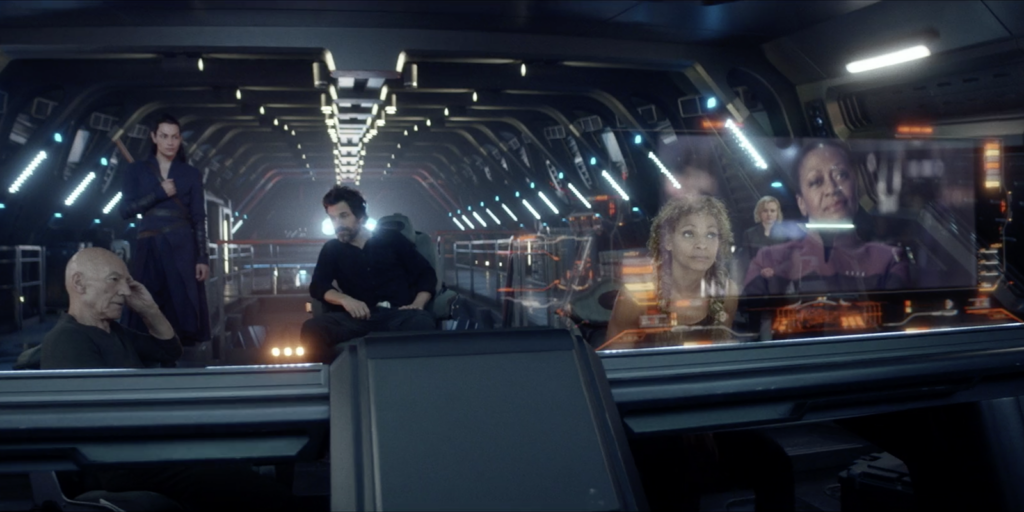
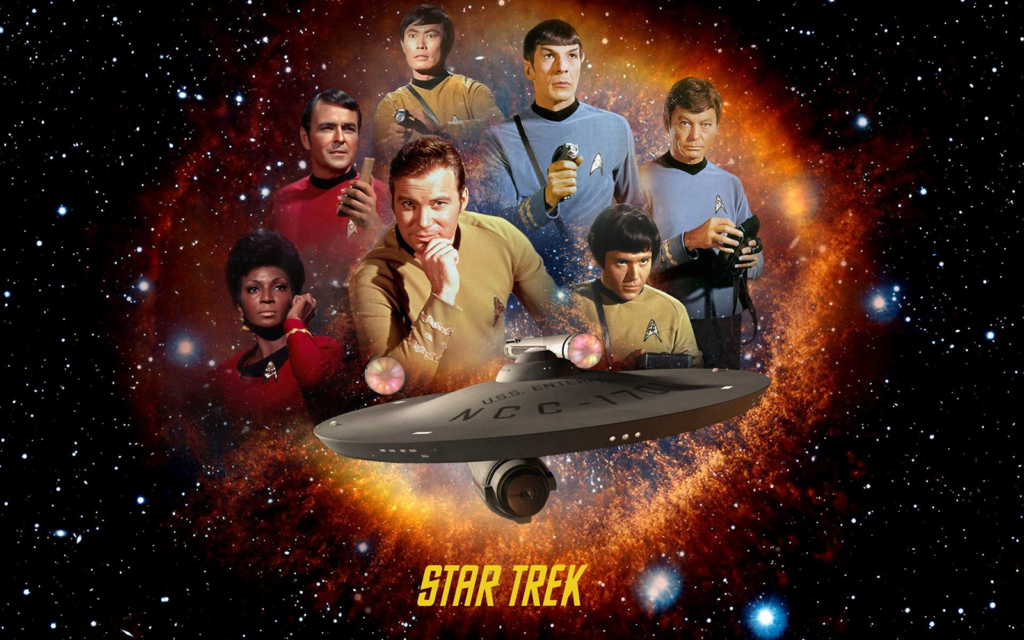

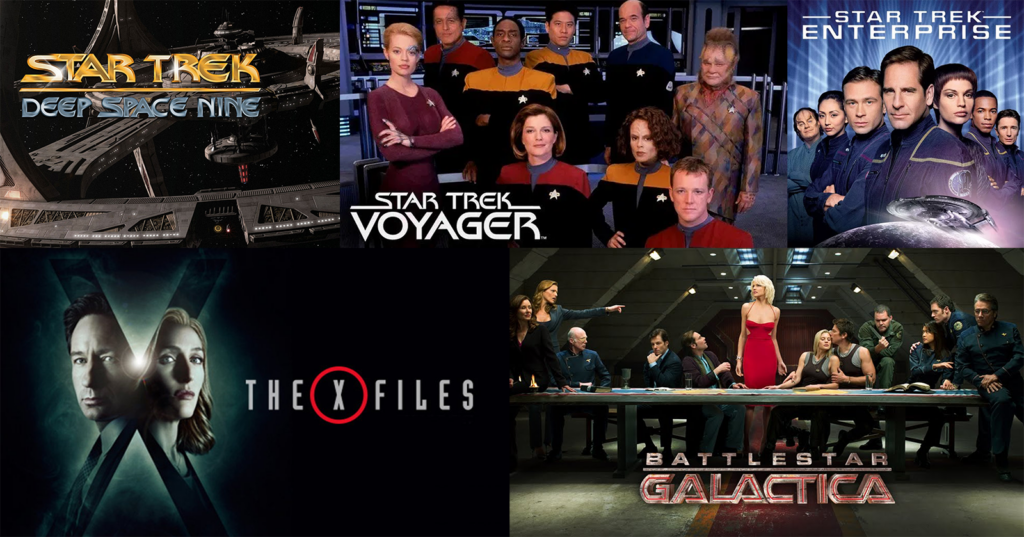
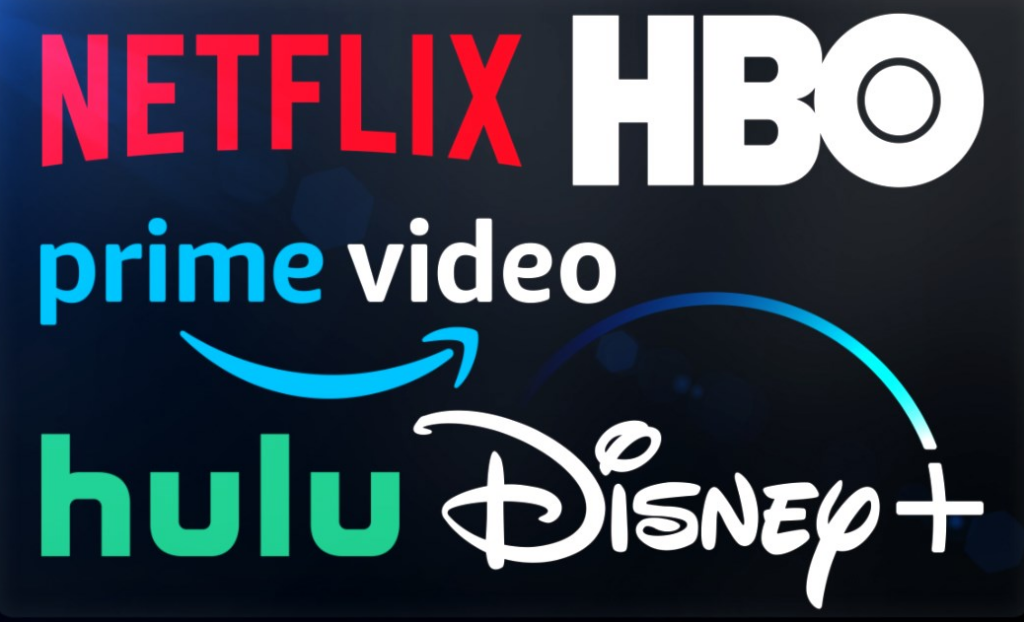
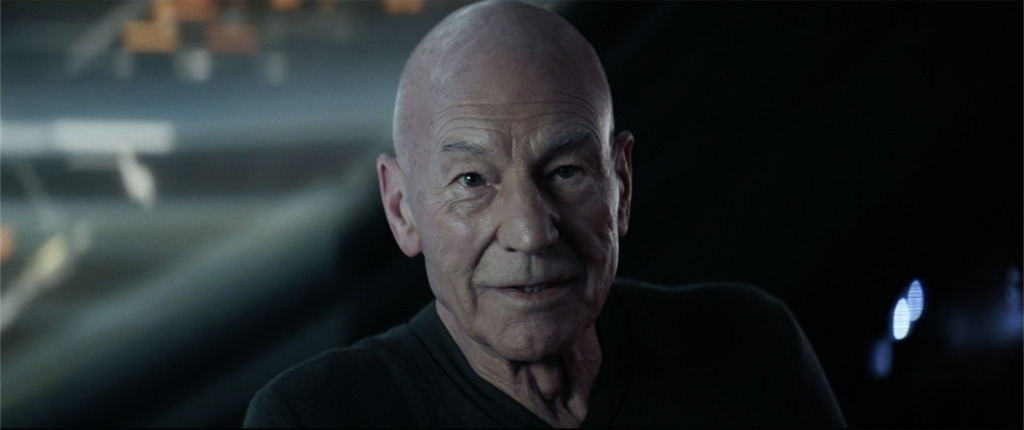
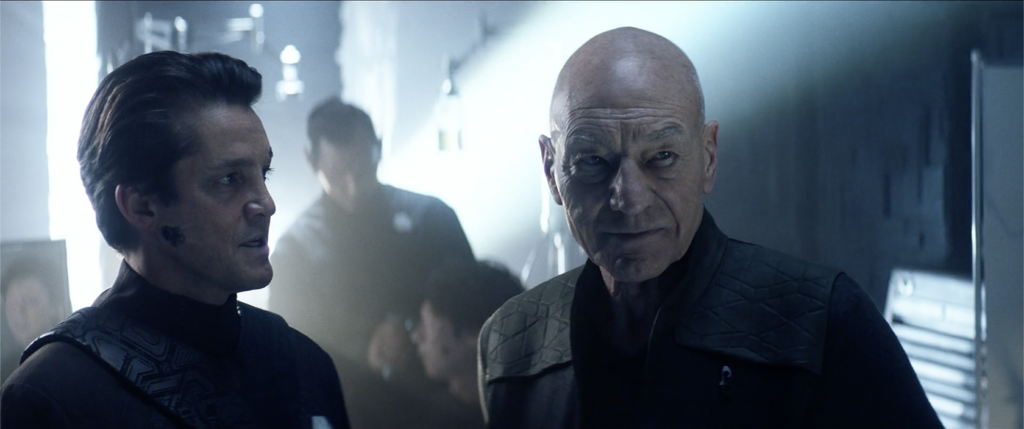
Jonathan,
I still think it’s generally too slow. The “Slow scenes” could be done a bit quicker, sped up enough so that another entire scene could have been added to break up some of the monotony!
(I believe canceled has only one “L”)
Cancelled can have one “l” or two…spell-checkers are okay either way. English be weird.
As for Picard, I still say wait for the last four episodes to finish. You might be surprised at how well everything fits together. Or not. We’ll find out soon.
“solid storytelling, plotted tightly and carefully”
To me, the reference to Babylon 5 is very apt. The plot arc might just be one year rather than the 4/5 for B5, but your point about a novel makes perfect sense since I agree
The only difference is one I rank B5 as better for. There were characters in B5 who switched from “good to evil” or “evil to good” over the series. Or perhaps better had the positive and negative sides of their personalities swap on the surface.
And who knows, we might just see that here.
Another big difference is that with B5 I could choose to go to the “Lurker’s Guide” for plot exposition and speculation after an episode and now the headlines that show up on my cellphone are plot spoilers when I wake up in the morning.
Well, I do heartily recommend watching “The Ready Room” with Wil Wheaton. It ain’t quite the ol’ B5 Lurker’s Guide (man, I miss that!!!), but it’s still very informative Behind-the-Scenes stuff.
As for comparisons with B5, remember that, by this point, we’d barely met Londo, G’Kar, Delenn, and even Sheridan (and don’t get me started on Kosh!). Also remember that Vir didn’t appear until the second episode, and Lennier not until the fourth. Sheridan didn’t get there until season 2 and Marcus until season 3. We’ve only had six episodes of Picard so far. Don’t rush things, my friend. Londo didn’t turn tragic overnight!
That was a good read. Where I think B5 was brilliant was that each episode (except possibly near the end) did have its own story even if, like your Friends analogy, you don’t know what’s going on overall. Stargate pulled off much the same trick.
I would love it if some of the 4th Gen shows (I’ll go with that) could pull this off more regularly. Yes, I like the Expanse but it is lazy to just start stop the story when you get to the 40 minute mark. But I guess this encourages binge watching (of which I’m guilty).
The 5th episode of Picard pulled off this balancing act I thought. Certainly my favourite so far.
Perhaps a 5th gen show will evolve to a point where, finding the baddy, will no longer be case of finding the character with a British accent or, if that fails, Wiki the actors for whoever happens to be British in real life (as we can do passable American accents). Oh wait, Picard’s got a (very) British accent, but that’s OK, he’s French???? What’s more, he can barely do a French accent to save his life – literally (a great bit of hamming by Sir Stewart I’m sure).
Rant over. I best be off to do something evil…
I now chat frequently with Axanar director Paul Jenkins, who is from Wales. Granted, I think he’s a smart guy in general, but the British accent just makes him sound EXTRA smart. I feel like heroes and villains are similarly “augmented” by having British accents. They sound either more heroic, stoic, and put together (a la James Bond or The Doctor) or else more menacing and nefarious. Imagine the Romulan baddies in Picard with Swedish accents. Doesn’t work, does it?
‘Nuff said.
We’re flattered, honestly, and it’s great the US gives British actors so much work! Incidentally I did get around to listening to the Paul Jenkins interview while I was DIYing, it was fascinating.
But, unless my memory fails me (which it can do), in Season 1 of discovery Jason Isaacs had an American accent and was still the bad guy. You were right on the money about him being from the mirror universe, but the main clue all along is that he was a British actor! I just find it amusing in this day and age.
All this said, ‘The Capture’ on the BBC had Ron Perlman as the chief villain (I know – hypocrisy), he was both smart and menacing i.e. you can sound just us evil as we do, so don’t do yourselves down!
Americans sound evil in more of a Tony Soprano/Dennis Hopper/Donald Trump kinda way. We do it well…but not with nearly as much flair as you Brits!
What’s funny, and what I find most distracting, is that in Picard, the Romulans seem to have totally British accents (Narek) and then totally American slang accents (like the Romulan senator). I remember in TNG they had normal American accents, didn’t they? WTF happened? If you’re using the stereotype of British = bad guys (like in Star Wars, for example), then do it, but do both? That confuses me. Or are they implying that the Romulan empire is so big that, accidentally, they have developed the whole variety of Earth English accents? Ridiculous…
Romulans had whatever accents the actors who played them had. Remember the commander who captured Trio in “Face of the Enemy”? Total accent…
https://www.youtube.com/watch?v=K2zwPVBuNp4
The rest of the crew had no accent. Sweating details like that (or wondering why Kirk didn’t send a shuttlecraft for Sulu and the freezing landing party in “The Enemy Within”) is allowing the perfect to be the enemy of the good. Enjoy the show for what it is, Olaf.
Good points, though it doesn’t change anything if an 8 hour movie divided into 10 parts is not what you want But yeah, I’ll keep watching and enjoying it for what it is, I guess.
But yeah, I’ll keep watching and enjoying it for what it is, I guess.
But what’s your gripe with Enterprise Season 3? I find that to be the best season of ENT, it has a good story, most episodes build nicely upon the previous, yet there’s still some (quasi) standalone episodes, and it all wraps up nicely (if you take the space nazis out of the equasion)
As season three started out under the “supervision” of Executive Producer Brannon Braga, one of his new head writers took a week in late August to map out story arcs for the season, what beats had to happen by episode three, by episode eight, by episode fourteen, etc. But Brannon felt that such “organization” was too constraining to creativity. He didn’t want the season bogged down having to follow some kind of preconceived blueprint. That head writer quit a few weeks later in frustration. In his opinion (and mine!), if you’re going to do a season-long story arc, you don’t simply wing it. But that’s what happened for the first third of the season.
By that point, Brannon had seen the writing on the wall. He knew Enterprise was going to be canceled, and he didn’t want to go down as the guy steering the ship when TV Trek went off the air for the first time in a decade and a half. You can almost tell when Manny Coto took over as show-runner because season three suddenly starts a major course correction. Each episode becomes a piece of the puzzle, leading into the next episode. In fact, the only episodes which feel off (like the episode traveling back in time to 2003) are ones where Brannon swooped in to write one. He also wrote the season finale, although by that point, all he really needed to do was color inside the lines to finish the season. And even then, the end of the episode was almost beat-for-beat identical to the end of Star Trek: Insurrection. And don’t get me started on the whole space Nazi cliffhanger. Brannon loved to do those sorts of things and leave the writers stuck trying to figure their way out the following season. By that point, Brannon knew there would be a final fourth season, but he still stepped away and let Manny Coto run the show and thereby be known as the executive producer who “killed” Star Trek…while Brannon looked for his next opportunity. Instead, Manny turned the series around in terms of quality and content, and Enterprise’s cancellation after season four is seen by most fans as a tragedy.
Ah ok, I didn’t know Manny Coto was brought onboard in season 3, I thought he took over in season 4. Still, I never felt that the first third of the season didn’t fit the rest. Guess I’ll have to rewatch it
And season 4 was good, yeah, but a little too fan-servicy for me. But it had great moments! And Brent Spiner!
Watch season three of Enterprise again. It starts off for about the first 6 or 7 episodes very unfocused. The writers themselves didn’t quite know what the Expanse and the Xindi were and were not. The writers were just throwing anomalies and aliens and attacks at the wall and seeing what stuck. It was kinda like the first few seasons of Lost. “Hey, what if there’s a polar bear on a tropical island?” “Great idea!” “I’ve got it! Two words: smoke monster.” “Wow, let’s do it!” “Okay, how about there’s a machine under the island that keeps the world from being destroyed?” “Holy crap…that’s brilliant!” “What if they sail past the foot of a giant statue, and just the foot itself is 30 feet high?” “Really? Who built the statue?” “Who knows? Who cares? We’ll figure that all out later on.”
As Enterprise’s third season continued, that seemed to be the plan: “We’ll figure that all out later on.” But as “later on” began approaching and Brannon Braga pulled back from day-to-day show-running, Manny Coto finally did what Brent V. Friedman had tried unsuccessfully to do a few months earlier and sketch out a plan for the remainder of the season. It’s something that never happened with Voyager. As many fans expected, Voyager simply found a way home in the final episode. Nothing really led up to that moment in the previous episodes. Manny didn’t want that.
So yeah, watch season three again and see if you can figure out when Manny took over. I actually think it’s pretty obvious.
I agree with you in that this series like STD is just one long episode broken up into episodic chapters and to get the whole picture you need to watch the entire series. With that said though really the writing, some of the acting, and plots are in my opinion just bad fan fiction. I find myself fast forwarding through some of the dialog just to get to the end. I honestly give this series a 4 out of 10 and is on the bottom of my list of rankings for Trek shows.
If you’re fast-forwarding and missing parts, then why watch it at all? That sounds like chugging down a vintage bottle of wine and scarfing down a gourmet meal without chewing. It just seems to me that you hardly needed to go through the trouble of ordering the wine and meal to begin with.